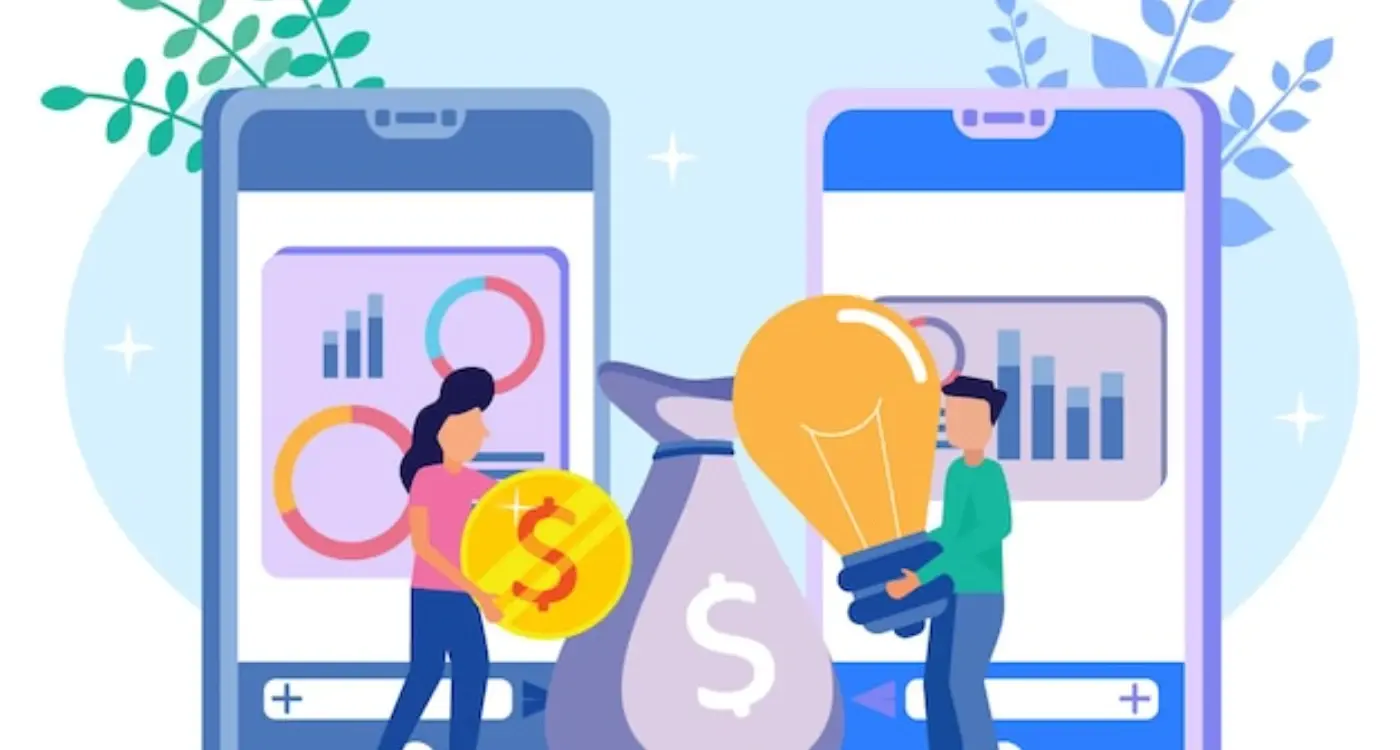What Branding Elements Help Apps Stand Out From Lookalikes?
When was the last time you downloaded an app and immediately forgot about it? I'm guessing it wasn't that long ago. The truth is, we're drowning in a sea of nearly identical apps—fitness trackers that all look the same, productivity tools with interchangeable interfaces, and social platforms that feel like carbon copies of each other. It's honestly getting a bit ridiculous how similar everything looks these days.
I've been designing and developing mobile apps for over eight years now, and I've watched this problem get worse with each passing season. Back in the early days, having a functional app was enough to stand out. These days? You're competing against millions of other apps, many of which do exactly what yours does. The real question isn't whether your app works—it's whether anyone will remember it exists after they've scrolled past it in the App Store.
Here's what I've learned from working with hundreds of clients: the apps that succeed aren't necessarily the ones with the most features or the biggest marketing budgets. They're the ones that create a distinct brand identity that users can connect with and remember. Think about it—when you reach for your phone, you don't look for "that blue social app" or "the one with the camera icon." You look for Instagram, TikTok, or WhatsApp because these apps have built recognisable brands that stick in your mind.
The most successful apps don't just solve problems; they become memorable experiences that users actively choose over nearly identical alternatives
But here's the challenge most app developers face: they focus so heavily on functionality that branding becomes an afterthought. They'll spend months perfecting their code and user flows, then slap together a logo and colour scheme in the final week before launch. That approach might have worked when there were fewer apps in the marketplace, but today it's a recipe for getting lost in the crowd. Your app's brand isn't just its visual appearance—it's the entire experience that makes users choose you over everyone else doing the same thing.
Understanding Your Brand Foundation
Right, let's get straight to the point—your app's brand foundation isn't just some fancy marketing term that agencies throw around to justify their fees. It's literally what stops your app from disappearing into that black hole of identical-looking competitors.
I've seen too many brilliant apps fail because their creators thought having good functionality was enough. Sure, your app might work perfectly, but if it doesn't have a clear personality, users won't remember it exists when they're scrolling through hundreds of similar options. Understanding what makes users switch from competitors is crucial for developing this distinctive brand personality.
Your brand foundation starts with three basic questions that most people get wrong: Who are you building this for? What problem does it solve that others don't? And—here's the big one—what feeling do you want people to have when they use your app?
The Core Elements That Actually Matter
When I'm working with clients on their brand foundation, we focus on these specific elements that directly impact how users perceive their app:
- Brand personality—is your app helpful and professional, or playful and irreverent?
- Core values—what principles guide every design decision you make?
- Unique positioning—the one thing that makes you different from everyone else
- Target user mindset—not just demographics, but how your users think and feel
- Brand voice—the tone and language that runs through all your content
Here's what I've learned after years of doing this: apps that nail their brand foundation early on spend less time (and money) fixing branding problems later. They also tend to build stronger user loyalty because people connect with apps that have a clear sense of identity. This foundation work directly impacts your ability to retain existing users while attracting new ones.
The foundation work might seem boring compared to designing flashy interfaces, but it's what separates apps that users love from apps that users tolerate. And in today's market, toleration doesn't pay the bills.
Visual Identity That Creates Recognition
Your app's visual identity is what makes people remember you in a sea of similar apps. I've worked on dozens of projects where clients came to me saying "we want something that looks modern" or "make it feel premium"—but honestly, that's not specific enough. Visual identity goes way deeper than just looking nice; its about creating a system that works consistently across every touchpoint where users encounter your brand.
Think about how quickly you can spot a Spotify playlist or recognise an Uber notification without even reading the text. That instant recognition doesn't happen by accident—it comes from carefully crafted visual elements that work together as a cohesive system. Every colour choice, every font pairing, every icon style needs to serve a purpose and reinforce your brand's personality.
The biggest mistake I see is when teams try to copy what's trendy rather than building something that reflects their unique value proposition. Sure, flat design and minimalist interfaces dominate the app stores right now, but within those constraints you can still create something distinctly yours. Its about finding the right balance between following platform conventions and expressing your brand personality.
Core Visual Elements That Drive Recognition
Building strong visual recognition requires consistency across several key elements. Each one needs to work independently whilst supporting the overall brand system:
- Primary brand colours that reflect your app's personality and work well on mobile screens
- Typography hierarchy that guides users naturally through your content
- Icon style that matches your overall aesthetic and remains readable at small sizes
- Imagery treatment that creates a consistent mood and tone
- UI patterns that become familiar to your users over time
- Animation style that adds personality without being distracting
Create a simple brand guidelines document that your entire team can reference. Include colour codes, font specifications, and examples of correct usage—this prevents visual inconsistencies that dilute brand recognition over time.
The goal isn't to reinvent design principles but to apply them in a way that's uniquely yours. When users see your app icon in their notification tray or spot your interface in a screenshot, you want them to know immediately that its your brand they're looking at.
Your app icon is basically your brand's first handshake with potential users—and honestly, you've got about three seconds to make a good impression. I've seen brilliant apps fail because their icons looked like they were designed in Microsoft Paint, and I've watched mediocre apps get thousands of downloads simply because their icon caught someone's eye in the App Store.
The thing is, your icon isn't just sitting there on its own. It's competing for attention alongside millions of others, all trying to scream "pick me!" at the same time. But here's what I've learned after years of watching which icons actually work: the best ones don't scream at all. They speak clearly.
Icon Design and App Store Presence
Your app icon needs to work at multiple sizes—from the tiny version in search results to the larger one on someone's home screen. This means complex details are your enemy; simple, recognisable shapes are your best friend. I always tell clients to test their icon by shrinking it down to the size of a thumbnail. Can you still tell what it is? If not, you need to simplify. Understanding what makes app icons instantly recognisable is crucial for creating that memorable first impression.
Key Elements for Standout Icons
- Strong contrast that works against both light and dark backgrounds
- Memorable shape or silhouette that's recognisable even without colour
- Consistent visual style that matches your app's overall brand
- No text or tiny details that disappear when scaled down
- Unique colour palette that doesn't blend in with common app categories
Your App Store presence goes beyond just the icon though. Screenshots, app descriptions, and even your app name all work together to tell your brand story. One mistake I see constantly? Apps that have a gorgeous icon but screenshots that look like they were taken on a phone from 2010. Everything needs to feel cohesive and professional—because users absolutely judge books by their covers in the app world.
Typography and Messaging Strategy
Your app's typography is basically its voice made visible. I mean, think about it — every single word your users read shapes how they feel about your brand. The fonts you choose, the way you structure your messages, even the length of your sentences all contribute to whether people trust your app or delete it within the first minute.
Here's the thing though; most apps get typography completely wrong. They either go for something trendy that'll look dated in six months, or they play it so safe that their text blends into the background noise of every other generic app out there. I've seen brilliant apps fail because their messaging strategy made them sound like everyone else in their category.
Font Choices That Build Recognition
Your typography needs to work at 12 pixels and 48 pixels. It needs to be readable when someone's walking down the street squinting at their phone, and it needs to feel consistent with your brand personality. A fitness app using delicate script fonts? That's not going to work. A meditation app with aggressive, blocky typography? Same problem.
The words you choose and how you present them determine whether users see you as the solution to their problem or just another app taking up space on their phone
Your messaging strategy goes way beyond just picking nice fonts though. Every piece of text in your app — from button labels to error messages — should sound like it's coming from the same brand voice. Users pick up on inconsistencies faster than you'd think, and nothing breaks trust like an app that can't decide what personality it wants to have. The apps that stand out are the ones where every word feels intentional, every message feels human, and the whole experience feels cohesive from start to finish.
Colour Psychology in App Branding
Right, lets talk about colour—because honestly, this is where I see most apps get it completely wrong. You wouldn't believe how many clients come to me with colour choices based purely on what their CEO's favourite shade is. That's not how this works!
Colour isn't just decoration; it's communication. When someone sees your app icon on their home screen, they're making split-second judgements about what your app does and whether it's trustworthy. Blue suggests reliability (theres a reason every bank uses it), green implies growth or health, red creates urgency. These associations are hardwired into our brains.
Industry Expectations Matter
I've worked on fitness apps that tried using purple and brown—looked lovely in isolation, but users couldn't connect it with health and wellness. We switched to energetic oranges and greens, and suddenly the app felt right. It's not about being boring; its about meeting user expectations first, then finding ways to stand out within those boundaries.
The Psychology Behind Popular Choices
Financial apps lean heavily on blue and green because they need to convey trust and stability. Dating apps often use reds and pinks to suggest passion and warmth. Gaming apps can get away with almost anything—bright yellows, electric blues, neon greens—because playfulness is expected.
But here's the thing nobody tells you: colour behaviour changes on different screens and in various lighting conditions. That perfect shade of blue you chose might look completely different on an older Android device versus the latest iPhone. Always test your colours across multiple devices before committing. I learned this the hard way when a client's "elegant navy" turned into "muddy black" on half their users phones!
User Experience as Brand Expression
Your app's user experience isn't just about making things work smoothly—it's one of the most powerful ways to express your brand personality. Every tap, swipe, and interaction tells users who you are as a company. I've seen too many apps that look the part but feel completely generic once you start using them.
Think about how different apps handle the same basic functions. A banking app might use calm, predictable animations that reinforce trust and stability. Meanwhile, a gaming app could use bouncy, playful micro-interactions that make every action feel rewarding. Same function, completely different brand expression.
Map out your key user journeys and identify three moments where you can inject brand personality through interaction design, loading states, or feedback messages.
Micro-Interactions That Matter
The small details make the biggest difference in brand perception. How does your app respond when someone completes a task? Does it celebrate with them or just move on? What happens during loading screens—do you show your brand personality or just a boring spinner?
I always tell clients that error messages are brand goldmines. Instead of generic "Something went wrong" messages, you can show empathy, humour, or whatever fits your brand voice. Users remember how an app makes them feel during frustrating moments.
Consistency Across Every Screen
Your onboarding flow, main navigation, and even your settings page should all feel like they belong to the same brand family. Here's what needs to stay consistent:
- Animation timing and easing curves
- Button styles and interactive states
- Spacing and layout patterns
- Voice and tone in all copy
- Loading states and transitions
When users can predict how your app will behave based on your brand personality, you've created something special. They're not just using your app anymore—they're experiencing your brand in a way that builds genuine connection and loyalty.
Building Emotional Connection Through Design
You know what? The apps that really stick with users aren't just functional—they make people feel something. After building apps for nearly a decade, I've seen how powerful emotional design can be. It's the difference between an app that gets used and one that gets loved.
Emotional connection starts with understanding your users' feelings, not just their actions. When someone opens your app, what mood are they in? Are they stressed about managing their finances? Excited about planning a trip? Frustrated with a task they need to complete? Your design should acknowledge and respond to these emotional states.
Creating Emotional Touchpoints
The apps that build lasting connections use design elements that trigger positive emotions at key moments. Here's how successful apps create these emotional touchpoints:
- Micro-interactions that celebrate user achievements with subtle animations
- Loading states that entertain rather than frustrate users
- Empty states that encourage rather than disappoint
- Error messages that use humour or empathy instead of technical jargon
- Personalised content that makes users feel understood
I've worked on healthcare apps where gentle animations help reduce anxiety during symptom tracking. The visual feedback doesn't just confirm an action—it provides reassurance. That's emotional design working properly.
Consistency Builds Trust
Emotional connection isn't just about individual moments; it's about creating a consistent personality throughout your app. Your brand voice should feel the same whether it's in a push notification, an onboarding screen, or an error message. Users develop trust when they know what to expect from your app's personality. This consistency is what ultimately drives user loyalty and retention in competitive markets.
The apps that stand out emotionally are the ones that feel human. They acknowledge user frustrations, celebrate successes, and communicate with genuine personality rather than corporate speak.
Building an app that stands out isn't just about having good features anymore—it's about creating a brand that people remember, trust, and actually want to engage with. After years of watching apps succeed and fail in the marketplace, I can tell you that the ones that make it long-term all have one thing in common: they know exactly who they are and they're not afraid to show it.
The apps that get lost in the crowd? They're the ones trying to be everything to everyone. They use generic colours, safe typography, and copy the same visual patterns everyone else is using. But here's what I've learned—users don't just download apps, they choose brands that align with their identity and values.
Your visual identity, from your icon to your colour palette, needs to work harder than ever before. It's not enough to look professional; you need to look memorable. Your typography choices should reflect your personality. Your messaging strategy should speak directly to your users' needs and desires, not just list features. Whether you're working with freelance developers or an in-house team, ensuring brand consistency across all touchpoints is essential.
Most importantly, every single interaction within your app should reinforce who you are as a brand. The way users navigate, the micro-interactions, the error messages—these all contribute to the overall brand experience. When someone uses your app, they should know it's yours without seeing your logo.
The mobile app market isn't getting any less competitive. User acquisition costs keep climbing, and retention rates remain stubbornly low across most categories. But apps with strong, distinctive branding consistently outperform their generic competitors in both downloads and long-term engagement.
If you take away one thing from this guide, let it be this: your brand isn't just how your app looks—it's how your app makes people feel. Get that right, and you'll have users who don't just use your app, they become advocates for it.
Share this
Subscribe To Our Learning Centre
You May Also Like
These Related Guides

How Do I Position My App When I'm Not First?

How Do I Ensure My App Matches Our Brand?



